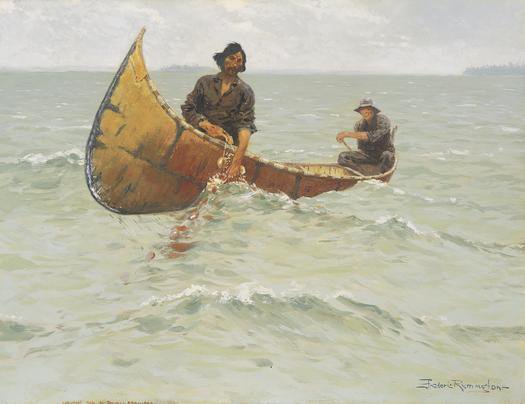Author Archive
State of the Union
As with America, I expect many Canadians watched the State of the Union Address last night. While I disagree with many things America does (or does not do, as the case may be) I do admire the way the country can get passionate about an ideal.
 In Canada about the only time we ever see anything that approaches nationalist passion is at a sporting event and that occurs perhaps once or twice in a century. The 1972 Canada/Russia Summit Series was my first memory of the real passion about being a Canadian. Was that nearly 40 years ago? Following that I had to wait until the Olympics to again capture the feeling. It was wonderful. The Canada/US hockey Gold Medal Final was beyond my wildest dreams but, unfortuately, it will likely the the penultimate event of this century.
In Canada about the only time we ever see anything that approaches nationalist passion is at a sporting event and that occurs perhaps once or twice in a century. The 1972 Canada/Russia Summit Series was my first memory of the real passion about being a Canadian. Was that nearly 40 years ago? Following that I had to wait until the Olympics to again capture the feeling. It was wonderful. The Canada/US hockey Gold Medal Final was beyond my wildest dreams but, unfortuately, it will likely the the penultimate event of this century.
On the political stage, the State of the Union provides an opportunity for America, through their President, to talk about where the country has been and where they might go in the future. The speech last night demonstrated that even bitter political opponents can occasionally agree and can even stand together and applaud.
In Canada we have no such opportunity. We sleep our way through the interminable time between elections, then a precious few wake long enough to cast a ballot. Many, I suppose, might not even bother to look at the names on the ballot.
A rousing speech by either Prime Minister Stephen Harper or would be Prime Ministers Michael Ignatieff or Jack Layton, should be sufficient to put the staunchest insomniac out cold. Oh, to have at least one evening of the year where we could glue ourselves to the TV and hear words about the great history of our nation, a nation with hugh challenges to face but also a nation that is passionate about new ideas and the future.
The thrill that would tickle through my spine to watch the four sides of our house periodically stand in unison and give a rousing applause to a speech by a Prime Minister from whatever party he might represent. Alas, that is not likely to be.
Oh Canada, We Stand on Guard for Thee! Yes, always, because I know you love our Country as dearly as do I, but please, we need to show it more often and with more passion than once every 40 years for a hockey game. Afterall, whose left now that we have beat Russia and the USA?
Harold McNeill
Victoria, BC January 25, 2010
(362)
Movie Review: Barney’s Version
Barney’s Version (2010 Release) based on a 1997 book by Canadian author, Mordecai Richler.
The best way I can think to describe this movie is by way of comparison to a piano keyboard. Assume for a moment that Middle C is the emotional centre of life. Many might live most of their lives close to Middle C while others would move further toward the extremes, experiencing both greater highs and greater lows. I rather suspect that to experience life to its fullest, it is necessary to move toward these extremes, after all, what does a significant gain mean if you have never suffered a significant loss? What does it mean to be rich if you have never been poor – in spirit, in love, in money or any other aspect of life?
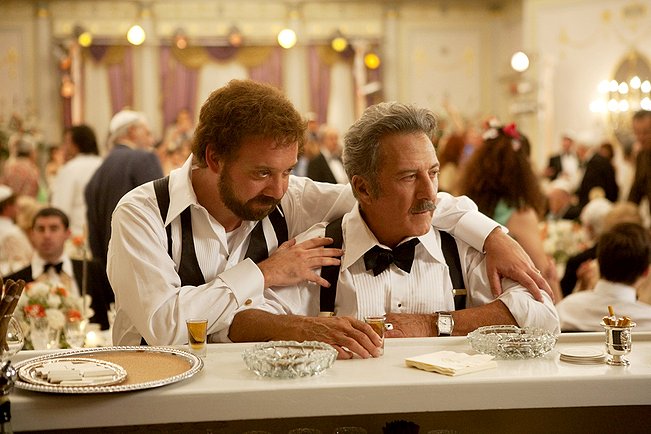
Barney’s Version, staring Paul Biamatti as Barney and Dustin Hoffman as his father, Izzy Panofsky, will take you to the extremes and back several times during the 134 minute running time. You will laugh, you might even cry but, guaranteed, when the movie ends you will be forced to reflect upon the depth and meaning of your own life and the relationships you share in that life. You might even be tempted to move further outside your comfort zone.
From Lynn and me this movie gets four thumbs up. We would be very interested in your thoughts.
Harold and Lynn
(363)
To Catch a Thief
Find out how an old friend managed to nail the thieves who were stealing gas from the company fuel storage tank.

The following incident happened in the early 2000s, was written in 2005 and posted in 2011 when this blog was first opened. The man at the centre of the story, about eighty at the time, was a short and stocky and, along with his deep, gravelly, no-nonsense voice, these combined features lent an air of command and sincerity that drew people to him. Before the story was published, Jack gave permission to use his name along with photos of he and his wife and their family home on a thirty-acre piece of property north of Victoria, British Columbia.
For over 50 years, Jack earned a good living blasting and building roads to mines and logging facilities over the length and breadth of Vancouver Island. He was an honest, hard-working man who would give his last dollar to someone in need but, steal or try to steal something from Jack and he could get his dander up in a hurry.
1. To Catch a Thief
At 4:00 am it was overcast and pitch-black at the home of Start home when the driveway alarm Jack had linked to their doorbell roused him from his slumber. He jumped from the bed and slipped on his boots while telling Ruthie, to just stay put as he would be back shortly. He grabbed his shotgun and while still in his pyjamas opened the door knowing no one would be standing there.
Jack was almost certain tonight was the night he would catch himself a thief. He wasn’t angry, hell, he wasn’t even nervous as he walked to his truck and climbed in, he was a man on a mission. Even though he had just turned eighty, he was still not willing to let those thieving bastards continue to drive 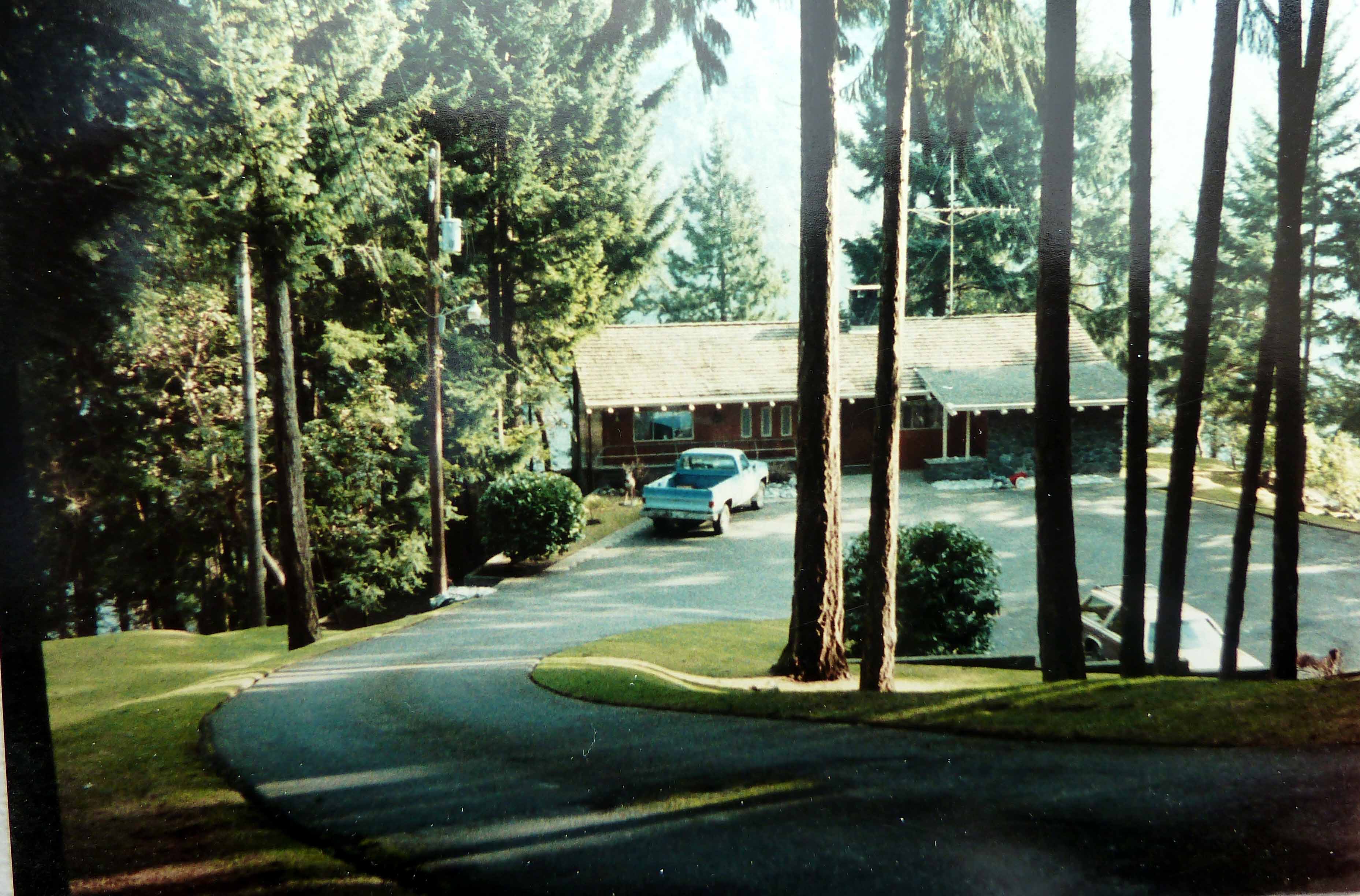 away with his gas. If the RCMP could not catch them, come hell or high water, Jack would do the job for them. He started the engine, jammed this heavier work truck in gear and set out heading up his along winding driveway towards the shop area.
away with his gas. If the RCMP could not catch them, come hell or high water, Jack would do the job for them. He started the engine, jammed this heavier work truck in gear and set out heading up his along winding driveway towards the shop area.
The Start home (photo left) was situated on an isolated acreage overlooking Brentwood Bay, a half kilometre below the Malahat Drive section of the Trans Canada about three kilometres northeast of Goldstream Park. Nestled in a grove of tall evergreens and surrounded by manicured lawns, the home was perched on the edge of a cliff that dropped 150 meters to the dark, cold waters of Brentwood Bay.
Photo (personal files): Looking down the winding driveway towards the Start home. The fuel storage area and workshop was located in a secluded area about 100 meters further up the slope. The truck in the driveway is his general use pick-up, not his heavier work truck with a winch on the front.
When looking out their living room window at night, the glow of light filtering into the clouds and mist above Greater Victoria, some 20 kilometres due south, added to the sense peacefulness of the area. The silence was only interrupted by the occasional sounds of traffic moving along the Malahat.
In the 1960’s Jack and Ruth selected this thirty-acre property to build their dream home as much for the spectacular view as for the abundant wildlife that Jack and Ruth nurtured with loving care. On any given day when travelling down the long winding driveway, it was evident the deer and all manner of other animals and birds loved this location as Jack made twice-weekly trips to Victoria to pick discarded vegetables and fruit at Thrifty Foods in Broadmead.
However, life on the property was not always as peaceful as Jack and Ruth had hoped. Over the years and particularly in the last several months, thieves had been making regular night-time visits to Jack’s workshop and fuel area about 300 meters up his driveway towards the Malahat. He had never installed gates or fences as he wanted the wild life to have free range of the property.
(2978)
The Big Kinosoo: Origin of the Legend – Chapter 1 of 6
The Big Kinosoo: Origin of the Legend – Chapter 1 of 6
Photo (Web Source): Fishing on Cold Lake in the Early Years
Link to Next Post: Monster Fish
Link to Last Post: Big Kinosoo: Growing the Legend
Link Back to Adventures Index
Cold Lake, Late 1800s
The following short excerpt is taken from a story by J.B. Minoose1, a friend of our family, Dave and Laura McNeill. We lived not far from Mr. Minoose and his family while our family was at the Martineau River logging Camp in the mid-1940’s. This was followed by two years at North Bay (Smith Place) on the North side of Cold Lake, then two years at Marie Lake which was 15 miles west of North Bay (reference Family Stories 1940 -1965). The Minoose story appears in Treasured Scales of the Kinosoo, a history of families in Cold Lake edited by Laura Dean Skarsen. Laura Dean Skarsen, was sister-in-law of our step-father, Wilfred Skarsen and our mother Laura Isabel Skarsen (McNeill) (Wheeler). J.B. Minooses (standing, second from right in photo) spoke of his life in Cold Lake:
(5766)
Laura Isabel: The Final Chapter – 5 of 5
Laura Isabel: The Final Chapter 5 of 5
In 2000, after 35 years on the farm, Laura and Wilfred bade a tearful farewell and moved to a home in Cold Lake just a few blocks from Frank and Louise. The move was initially difficult for Wilfred as he had lived on the farm for over 60 years. However, once in their new home, the couple again worked hard on the lawns and gardens and created a neighbourhood gem.
 Having become accustomed to the large deck that Frank and Wilfred built on the farm house after it was moved to the new farm site, Wilfred, Harold, Kari (McNeill) and Ashley (Yochim) constructed a large deck on their new home, a deck that continued to provide years of enjoyment for family and friends. Sadly, in 2002, after a lingering illness, Wilfred passed away in the Cold Lake hospital and is much missed by his family and friends. We shall always treasure those years on the farm.
Having become accustomed to the large deck that Frank and Wilfred built on the farm house after it was moved to the new farm site, Wilfred, Harold, Kari (McNeill) and Ashley (Yochim) constructed a large deck on their new home, a deck that continued to provide years of enjoyment for family and friends. Sadly, in 2002, after a lingering illness, Wilfred passed away in the Cold Lake hospital and is much missed by his family and friends. We shall always treasure those years on the farm.
Photo: Laura had a lifelong love affair with flowers. From the very earliest years on the homestead until the day she passed away in 2008, her house was always surrounded by flowers every summer.
While the passing of Wilfred brought to a close another chapter in the extraordinary life of Laura, true to her pioneer spirit, she continued her winning ways with a “warm welcome” for anyone who might chance to pop by for a coffee or home made pie or pastries. While Laura scaled back in some areas she continued to maintain a wonderful array of flowers and always had fresh baked bread and pastries for her family and friends. As she is fond of saying: “I love my Bosch” and she used it almost everyday to whip up a little something. Who can ever forget a big helping of her homemade bread and gravy or those buns that have became legend within the family?
(525)
Laura Isabel: Uffda! – A New Beginning – Chapter 4 of 5
Laura Isabel: Uffda! – A New Beginning – Chapter 4 of 5
Never one to look back with yearning or regret, Laura married a neighboring farmer, Wilfred Skarsen , and the happy couple started a whole new life with Dianne, who was just approaching her teens. Uncle Lennel (Wilfred’s older brother) lived with them while sharing the original family home until, 1982, at the age of 73, Lennel married Emma Adele Shular. Both 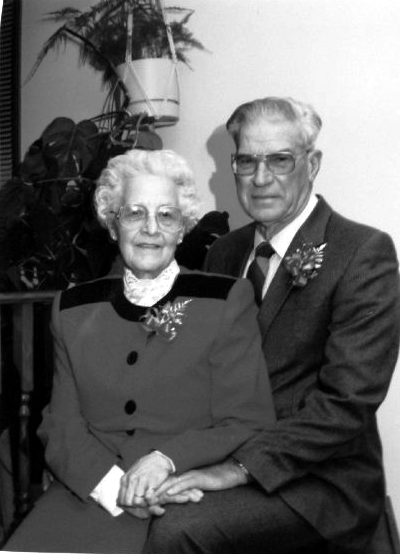 men, who, to that point, remained bachelors, were suddenly the step-fathers to 13 children and countless grandchildren. Both stepped into those big shoes as if they had been groomed for the roles their entire lives.
men, who, to that point, remained bachelors, were suddenly the step-fathers to 13 children and countless grandchildren. Both stepped into those big shoes as if they had been groomed for the roles their entire lives.
Laura’s beau, Wilfred, was the sixth of seven sons of Oscar (1880) and Petra (1890) Skarsen (Myhre) whose families began homesteading the Riverhurst area in I939. This enterprising Norwegian-Canadian family – son’s, Lennel, Julian, Melvin, Morgan, Percy, Wilfred, Wilbert and, daughter Stella – quickly expanded their interests into mixed farming, fishing, hunting, logging and milling, trapping, carpentry and commercial painting. They were an industrious family group and added much to life in the Cold Lake area.
Laura and Wilfred continued to live on the original Skarsen homestead in Cold Lake, however when Highway 55 was widened in 1981, they moved the entire farm, lock stock, barrel and grainery, 500 yards to the north-west. This new location, with freshly painted granaries, a new barn and a backdrop of pine and poplar, quickly became a showcase as Laura and Wilfred expanded the gardens and expansive lawns.
Their efforts lead to an Alberta Government “Farm Beautification Award” in 1985, just three years after moving to the new location. Laura also received personal recognition in 1996 when she was awarded the Provincial “Imogene Duce Award” for her activity with the local TOPS Chapter. A few words from that award express the sentiment of any who have come to know Laura:
“Love, caring and understanding – a person possessing an abundance of any one of
these qualities is truly exceptional. We have just such an exceptional lady in our chapter
and she is perhaps even more exclusive because she excels, not just in one but in all three
of these categories…” (Diana French, Chapter Leader, TOPS AB4003, Riverhurst)
(1017)
Laura Isabel: The Young Woman – Chapter 3 of 5
Laura Isabel: The Young Woman – Chapter 3 of 5
During her teen years, Laura and her family went about the daily routine of cooking meals, working in the garden, mowing hay, looking after the animals, cutting wood and all the chores that were part of early farm life on the prairies. Because they were so close to Birch Lake, the kids had many fond memories of swimming and boating on those hot summer days when they could sneak away from their daily chores.
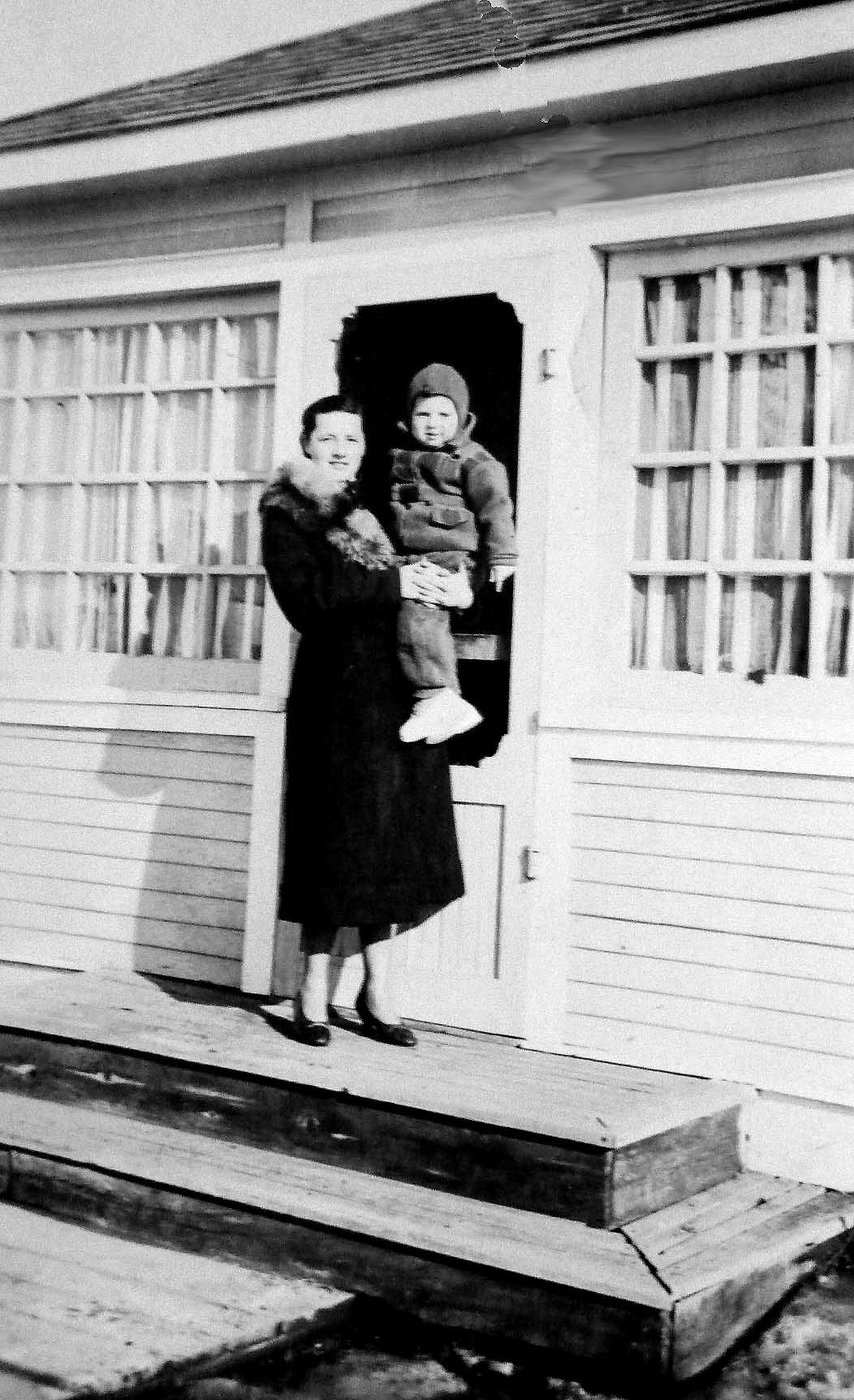 Always a homebody, Laura traveled for the first time, at age 16, to work on a family farm outside Battleford looking after five kids under the age of four. She became so homesick after a couple of weeks that her dad traveled to Battleford in his Model T to pick her up. Her next job was working as a cook for a road construction crew as they rebuilt Highway 55 (now Hwy 3) out of Glaslyn.
Always a homebody, Laura traveled for the first time, at age 16, to work on a family farm outside Battleford looking after five kids under the age of four. She became so homesick after a couple of weeks that her dad traveled to Battleford in his Model T to pick her up. Her next job was working as a cook for a road construction crew as they rebuilt Highway 55 (now Hwy 3) out of Glaslyn.
When Laura was 21, the family suffered a double tragedy when her brother, Leonard, then twenty-five, was drowned in the Shuswap River while trying to save a friend’s life after the friend had fallen from a log boom on which they were working. While the whole family grieved over the loss, their father Bill took the death particularly hard. Later that winter he contracted scarlet fever and, tragically, in the early spring of 1940, he died at the age of 51 just a few months before Laura married Dave McNeill.
Following the death of her son and husband, life for her mother and the family became very difficult. Shirley was barely two, Helen and Marcia were five and seven and Tonnie had just turned ten. Melvin returned home to help his mom, followed later by Clifford who had served in the military until the end of the Second World War. In order to help make ends meet, Lilly, Helen and Marcia worked on neighbouring farm but the nearly all the money they earned was deducted for room and board and any remaining, which was pitifully little, was deducted from her meager widow’s pension of $30 per month.
(923)
Laura Isabel: The Early Years – Chapter 2 of 5
Laura Isabel: The Early Years – Chapter 2 of 5
Laura was the third of ten children born to Bill (William Skyler -1888) and Lillie Cressie Wheeler (Elliott – 1896). Siblings included Leonard (1914), Evelyn (1916), Kenneth (1920), Melvin (1922), Clifford (1924), Tonnie (1928), Marcia (1932), Helen (I934) and baby Shirley (1938).
In the early spring of 1924, Bill and Lilly, along with other family members, pulled up stakes and headed out from the Alsask, Saskatchewan, to take up homesteading at Birch Lake, a few miles North-East of Glaslyn. At that time the five children ranged in age from 2 to 10 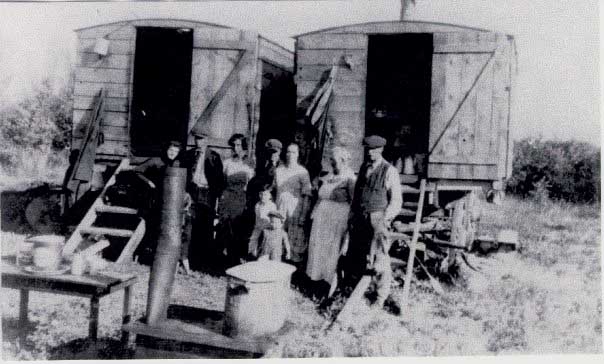 years and Lilly was expecting her fifth. Clifford was born that September. Lilly attributed the distinctive brown birth mark prominently displayed on Clifford’s forehead to the fright she suffered when Melvin, then two, almost fell from the caboose while crossing a river enroute to Birch Lake.
years and Lilly was expecting her fifth. Clifford was born that September. Lilly attributed the distinctive brown birth mark prominently displayed on Clifford’s forehead to the fright she suffered when Melvin, then two, almost fell from the caboose while crossing a river enroute to Birch Lake.
Photo: The wagon train ready to head out. Howard (Laura’s dad’s brother) and Myrtle Wheeler, her mom and dad, Lilly and William, grandparents, and siblings, Kenneth and Evelyn.
While Bill and Lillie were able to provide their family with a comfortable life (by the standards of a 1920’s homesteader) it did require the labour of all family members. That first summer, after the crops and garden were planted (some of the land was previously broken), Bill set about building a three room log house with sod roof, mud plastered cracks and whitewashed exterior.
(1511)

